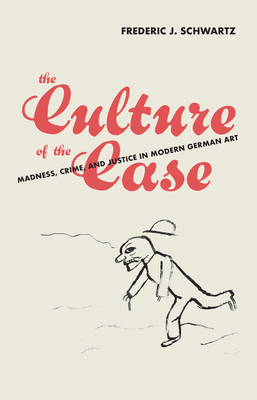The Culture of the Case: Madness, Crime, and Justice in Modern German Art

The Culture of the Case: Madness, Crime, and Justice in Modern German Art
How artists in twentieth-century Germany adapted the idea of the medical or legal case as an artistic strategy to push to the fore sexualities, scandals, and crimes that were otherwise concealed. In early twentieth-century Germany, the artistic avant-garde borrowed procedures from the medical and juridical realms to expose and debate matters that society preferred remain hidden and unspoken. Frederic J. Schwartz explores how the evocation or creation of a "case" provided artists with a means to engage themes that ranged from blasphemy to Lustmord, or sexual murder. Shedding light on the case as a cultural form, Schwartz shows its profound effect on artists and the ways it dovetailed with methods used by these figures to exploit fundamental changes taking place across the mass media of their time. As Schwartz shows, the case was a common denominator that connected seemingly disparate works. George Grosz and Rudolf Schlichter drew on it for their violent visual art, as did architect Adolf Loos when he equated ornament with crime. Expressionists, meanwhile, approached the question of whether the so-called "mad" shared a right of public expression with those deemed sane, and examined medical and legal approaches to what society labeled as insanity. The case also took on a personal dimension when artists found themselves confronted with, or chose to engage with, the legal system. German courts prosecuted John Heartfield and others for their provocative works, while Bertolt Brecht created publicity for himself by suing the firm to whom he sold the film rights to The Threepenny Opera. Provocative and insightful, The Culture of the Case offers a privileged view of the spaces of representation in which images--in some instances, as cases--functioned at a key moment of modernity.
PRP: 295.20 Lei
Acesta este Prețul Recomandat de Producător. Prețul de vânzare al produsului este afișat mai jos.
236.16Lei
236.16Lei
295.20 LeiLivrare in 2-4 saptamani
Descrierea produsului
How artists in twentieth-century Germany adapted the idea of the medical or legal case as an artistic strategy to push to the fore sexualities, scandals, and crimes that were otherwise concealed. In early twentieth-century Germany, the artistic avant-garde borrowed procedures from the medical and juridical realms to expose and debate matters that society preferred remain hidden and unspoken. Frederic J. Schwartz explores how the evocation or creation of a "case" provided artists with a means to engage themes that ranged from blasphemy to Lustmord, or sexual murder. Shedding light on the case as a cultural form, Schwartz shows its profound effect on artists and the ways it dovetailed with methods used by these figures to exploit fundamental changes taking place across the mass media of their time. As Schwartz shows, the case was a common denominator that connected seemingly disparate works. George Grosz and Rudolf Schlichter drew on it for their violent visual art, as did architect Adolf Loos when he equated ornament with crime. Expressionists, meanwhile, approached the question of whether the so-called "mad" shared a right of public expression with those deemed sane, and examined medical and legal approaches to what society labeled as insanity. The case also took on a personal dimension when artists found themselves confronted with, or chose to engage with, the legal system. German courts prosecuted John Heartfield and others for their provocative works, while Bertolt Brecht created publicity for himself by suing the firm to whom he sold the film rights to The Threepenny Opera. Provocative and insightful, The Culture of the Case offers a privileged view of the spaces of representation in which images--in some instances, as cases--functioned at a key moment of modernity.
Detaliile produsului









